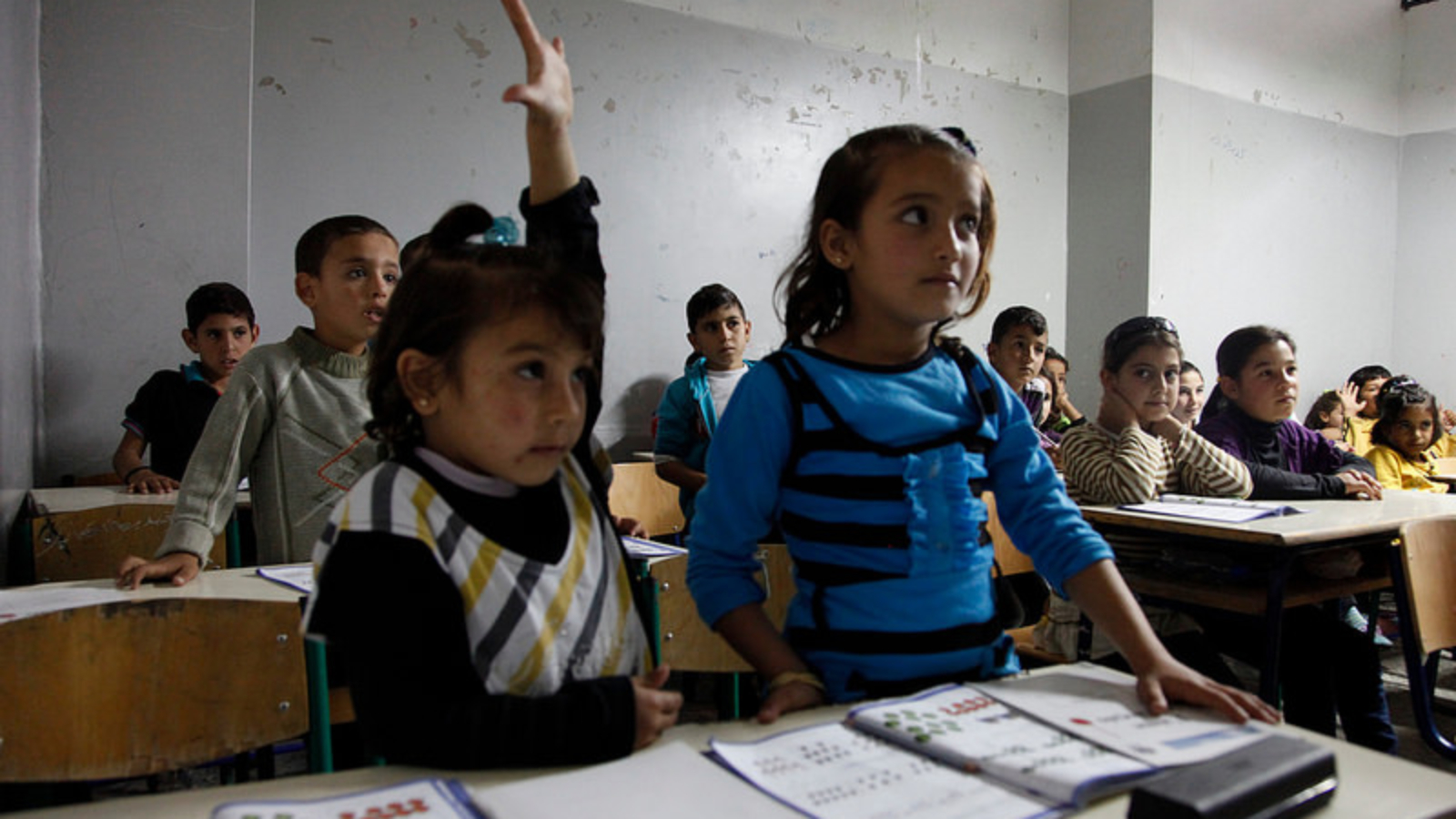By Yaffa Fredrick
UNITED NATIONS—Fifteen years after the Millennium Development Goal (MDG) of achieving universal primary education was announced, 57 million children remain out of school. Of those 57 million, approximately half live in conflict-affected areas—ones where the threat of violence or natural disaster prevent their safe passage to school each day. And yet despite these startling statistics, the United Nations has committed itself to an even loftier education goal: achieving universal primary and secondary education by 2030.
At a Sept. 26 U.N. gathering of world leaders, Malala Yousafzai, the Nobel Peace Prize Laureate, explained that the enormity of the task did not negate the importance of tackling the education issue in the here and now. “Education is peace; education is hope,” she remarked. Without it, the Taliban—who almost cost Yousafzai her life—would continue to prey upon the uneducated, spreading a radical jihadist gospel.
Gordon Brown, United Nations Special Envoy for Global Education and former British Prime Minister, echoed this sentiment. He argued that education was not only a means to fight radicalism, but a tool to rebuild in the wake of its destruction. On a recent trip to Lebanon, Brown met with a 12-year-old Syrian refugee. He asked her what she dreamed of achieving, and she said to go back to school, study engineering, and return to her home country to help in its reconstruction.
Brown, in this brief anecdote, touched on the biggest challenge facing the education initiative: the largest refugee crisis since World War II. While there have been refugees since the MDGs were adopted in 2000—particularly from the Sahel region—the issue now, according to Jordan Naidoo, Director of Education for All at UNESCO, is the scale and speed by which the refugee community is growing.
The latest estimates from the U.N. Refugee Agency put the number of refugees globally at 13 million. Four million or so—mostly Syrian—are recent additions to that startling statistic, raising concern among Middle Eastern and European countries faced with absorbing and accommodating these populations.
Nonetheless, Naidoo believes the education issue can and must be addressed. The first step, he says, is to achieve “political agreement on the importance of addressing education in the here and now.” And UNESCO has already gathered the evidence to necessitate such agreement. According to a recent UNESCO report, any given country with a high rate of out-of-school-children (OOSC) will suffer the economic consequences. Its GDP will drop anywhere from 1 percent, as seen in Thailand, to 10 percent, as seen in Gambia.
This economic argument may convince governments, particular in Europe, as well as international organizations that they need to take steps to educate these refugee populations. The challenge is convincing these same governing bodies to treat education as a humanitarian need, warranting immediate action and funding.
Humanitarian aid is typically defined as emergency relief—namely the provision of food, water, and shelter. Though humanitarian advocates like Naidoo have been arguing that education should fall under the same definition, most sectors still define it as a development issue, which is a long-term goal with alternate sources of funding. As a result, little relief money is currently allocated toward providing education for refugee populations. In fact, according to UNESCO’s June 2015 Policy Paper 21 on education monitoring, only 2 percent of humanitarian aid currently goes to education, which is half of the minimum target of 4 percent.
The compromise, according to Brown and Naidoo, may be treating education as both a humanitarian and development issue. In this manner, education can be treated on a continuum, where immediate funding is released in emergency situations, but is maintained even after the threat of conflict or violence subsides.
“Action implementers from Save the Children to UNICEF are already beginning to link their emergency education funding with their development arms,” says Naidoo. And the Global Partnership for Education, comprised of 60 developing countries, NGOs, the private sector, and civil society, is currently considering adopting a similar model.
Assuming education is defined as an issue warranting emergency relief and the 4 percent target is met, Brown and Anthony Lake, the Executive Director of UNICEF, have an initial low-cost solution, which can be applied among refugee populations. In a follow up conference on youth education, they proposed a plan called the “double shift situation.” Using the example of Lebanon, where 400,000 Syrian refugee children are currently residing, Brown explained a system whereby the local Lebanese children would go to school by day, and the Syrian refugee children would attend that same school in the afternoon and early evening.
The advantage of this solution is that it eliminates the need to build new schools, a costly and time consuming process, and allows refugee children to enroll without any further delay. Naidoo adds, too, that while some host country teachers will need to work to make this system feasible, there is also the option of drawing on teachers within the refugee population. Many Syrians are well educated and could potentially act as teachers in afternoon and evening classes, thereby eliminating overtime costs related to host country teachers.
Lake estimates the cost of educating Syrian refugees across Lebanon, Turkey, and Jordan at $500 per child per year, or $500 million total. It may sound like a steep price tag, even with several cost cutting measures in place, but as Lake asked at the end of the youth conference, “What is the future of that region if we don’t educate those children?”
*****
*****
Yaffa Fredrick is managing editor of World Policy Journal. She reports on education, women’s rights, and other development issues at the United Nations.
[Photo courtesy of DFID – UK Department for International Development]
